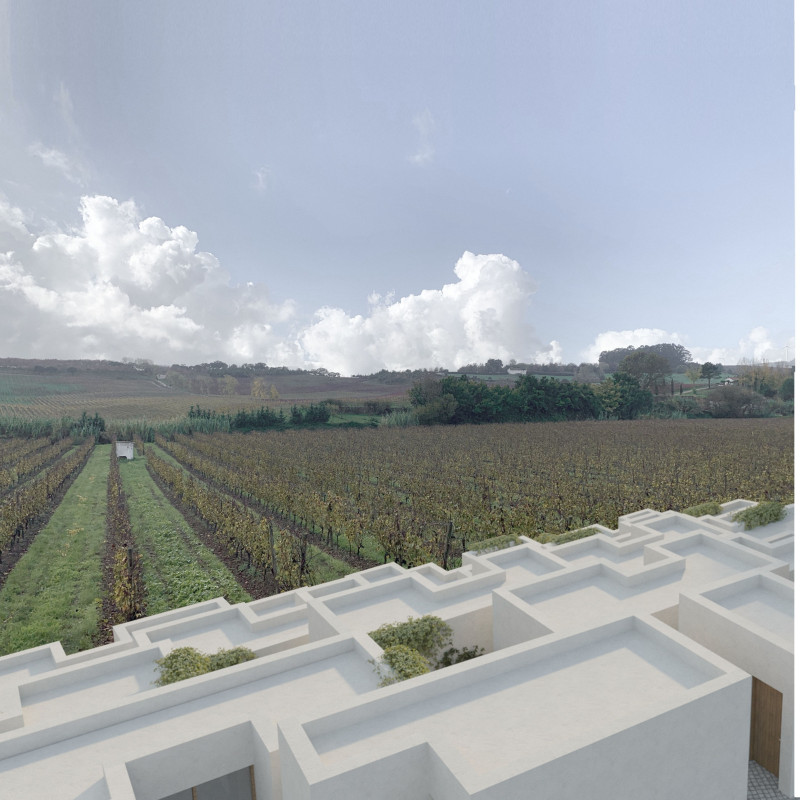5 key facts about this project
At its core, the project is designed to be both a residential space and a series of public amenities. It encompasses residential units, communal facilities, a winery, a restaurant with an extensive terrace, and wellness amenities such as a spa and gym. This combination of functionality emphasizes the importance of creating spaces that cater to diverse needs while encouraging community engagement. The design reflects a commitment to enhancing quality of life for residents and visitors, creating a harmonious blend of living and leisure.
A notable aspect of this project is its spatial organization, which employs narrow pathways that evoke the charm of historical Iberian cities. This design approach not only promotes navigation and exploration but also instills a sense of safety and intimacy for users. Such pathways are not merely functional; they serve as vital connectors that generate opportunities for social interactions among users.
The materiality of the project plays a significant role in establishing its identity. The use of local stone as a key building material grounds the design within its context, while concrete is explored for both structural purposes and aesthetic appeal. Glazing is utilized to create transparency, allowing seamless transitions between indoor and outdoor spaces, further enhancing the connection with the surrounding environment. Wooden elements are strategically incorporated to provide warmth and comfort in interior spaces, enriching the overall atmosphere.
Unique design approaches include an innovative configuration of spaces that balance public and private functions. The modular nature of the buildings allows for flexibility in usage, enabling spaces to accommodate varying events and activities. This adaptability is crucial in fostering a sense of community, as it encourages gatherings, performances, and leisurely outings for all visitors.
Moreover, terraced landscapes are thoughtfully incorporated into the project, creating vantage points that overlook the vineyards. These terraces not only enhance user experience but also invite nature into everyday life, blurring the distinction between built environments and the natural landscape. The inclusion of serene courtyards and outdoor platforms allows for year-round utilization, promoting active engagement with both the surroundings and the community.
The aesthetic choices made throughout the design reflect a deep respect for local heritage, as the architectural elements resonate with traditional typologies while successfully introducing contemporary characteristics. This balancing act allows the project to embody both history and modernity, inviting visitors to appreciate the beauty of the region's architectural evolution.
Overall, this project serves as a testament to the capabilities of architecture in creating meaningful spaces that reflect local culture and enhance community interactions. The harmonious integration of residential and public areas, thoughtful materiality, and unique design approaches come together to create a cohesive environment. To explore the project further, including the architectural plans, architectural sections, and innovative architectural ideas embedded within the design, readers are encouraged to delve into the detailed presentation of this thoughtful architectural endeavor.


























